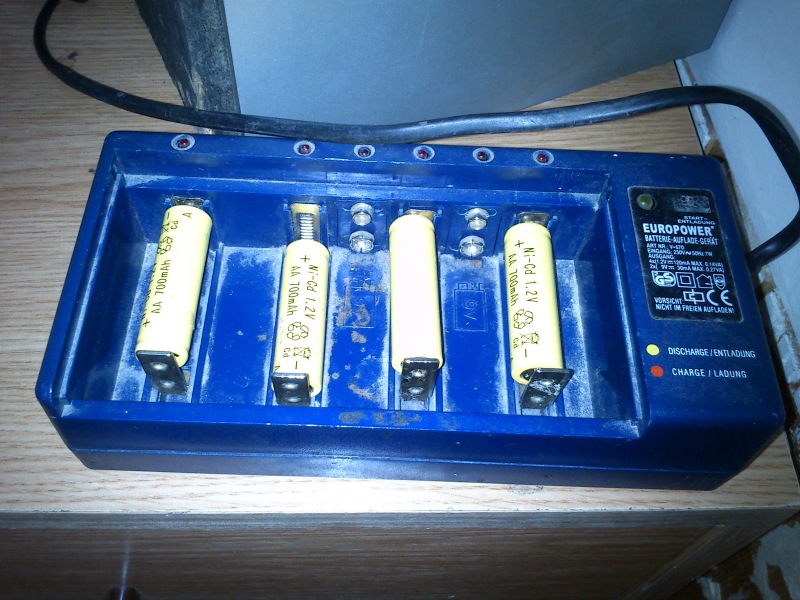commander768
- Jul 18, 2014
- 39
- Joined
- Jul 18, 2014
- Messages
- 39
Hi,
Lately i have been working on a project, trying to reasemble a cordless drill battery from 2 old dead battery packs. I already have a working drill with good battery so i am doing this project for fun trying to learn as much as i can in the process. I have a few questions.
- I tried to charge 4 NiCd 1.2V batteries. I used an adapter that i got with a cordless drill that uses 4 batteries. Its 6V 350mA. I connected it directy to batteries creating a circle and noticed that the current is 600mA. Since it was over 350mA i disconected it but i am wondering why this happened. Was this because batteries were bad and had less voltage, therefor the difference between voltage of them and the voltage of adapter was bigger, resulting in bigger current ?
Or maybe i shouldnt connect the batteries directly to adapter anyway ? Looking at the inside of a drill ( its a cheap 4.8V ) i am pretty sure the adapter connects directly to batteries without any circuit controlling it .. and if it is rated for 350mAh and drawing more, it is not ok ..
- if i wanted to figure out the approximate mAh of the battery, could i just hook it up to a resistor ( 1 Ohm for instance ) and then check voltage of the battery at different periods, for instance at minute 0 and minute 10. Lets say voltage at minute 0 was 1V and at minute 10 0.9V, then it suddenly got empty. For the sake of argument lets say that voltage drop was linear. So we get average voltage of 0.95V, 1Ohm resistance and time 10 minutes. So calculating ( 0.95V / 1Ohm ) / 6 = 158mAh. Would that estimate be good ?
Lately i have been working on a project, trying to reasemble a cordless drill battery from 2 old dead battery packs. I already have a working drill with good battery so i am doing this project for fun trying to learn as much as i can in the process. I have a few questions.
- I tried to charge 4 NiCd 1.2V batteries. I used an adapter that i got with a cordless drill that uses 4 batteries. Its 6V 350mA. I connected it directy to batteries creating a circle and noticed that the current is 600mA. Since it was over 350mA i disconected it but i am wondering why this happened. Was this because batteries were bad and had less voltage, therefor the difference between voltage of them and the voltage of adapter was bigger, resulting in bigger current ?
Or maybe i shouldnt connect the batteries directly to adapter anyway ? Looking at the inside of a drill ( its a cheap 4.8V ) i am pretty sure the adapter connects directly to batteries without any circuit controlling it .. and if it is rated for 350mAh and drawing more, it is not ok ..
- if i wanted to figure out the approximate mAh of the battery, could i just hook it up to a resistor ( 1 Ohm for instance ) and then check voltage of the battery at different periods, for instance at minute 0 and minute 10. Lets say voltage at minute 0 was 1V and at minute 10 0.9V, then it suddenly got empty. For the sake of argument lets say that voltage drop was linear. So we get average voltage of 0.95V, 1Ohm resistance and time 10 minutes. So calculating ( 0.95V / 1Ohm ) / 6 = 158mAh. Would that estimate be good ?

